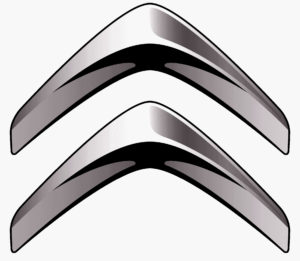All good things must end sometime, and so it was with the DS in 1974. The CX was revealed…
Questioning automotive conventions again, and bringing the effect of aerodynamics closer to the motoring public than ever before – even the name CX refers to the french initials for the co-efficient of drag. Using the fully-powered variably assisted steering from the SM, and a highly ergonomic yet individual cockpit layout, it was said of the CX that, after 10 minutes, you never want to drive one again. After an hour, you never want to drive anything else again.
The Citroën CX was launched, with initial rumours suggesting it would sit alongside the DS in the range, as a slightly smaller alternative. However, the D was quickly discontinued – leaving the CX as the replacement. It did started off impressively, being voted the European Car of the Year in 1975. The oil crisis had led to the rumoured tri-rotor Wankel engines being canned, and the first engines available in the CX were derived from its predecessor, as was Citroën’s famous and wonderful Hydropneumatic suspension. The very first CXs had un-assisted steering, although the Diravi steering from the SM was soon available, creating a very different driving experience.
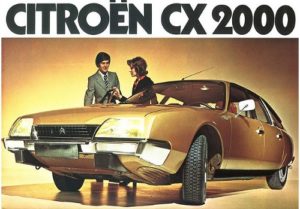
Within a year or two, Citroën introduced the estate version of the CX, a semi automatic gearbox and a diesel engine – their first diesel-powered car since the Rosalie in the 1930s. Unlike the four-speed semi-automatic gearbox in the DS, effectively a hydraulically automated manual box and clutch, the semi-automatic (called C-Matic) had only three gears, but added a torque converter and electric operation of the clutch.
Using a longer wheelbase, the CX Estate came in two variants – Safari and Familiale. The Safari had a massive load area and was great for moving large quantities of stuff around, while the Familiale used the extra space to incorporate a third row of seats – very popular with large families, before the Renault Espace brought the people-carrier to the market. This longer wheelbase (9 inches over the standard saloon) was also used in the ultra-luxurious CX Prestige, giving a huge amount of rear leg room. Within a year of launch, the Prestige gained a higher roof-line, reputedly at the demand of President Mitterand. Over the first few years of the CX, the 2200 engine (the same capacity as the DS21 engine) was replaced by a 2400 (the same capacity as the DS23), and the 2200 diesel (with only 66bhp) replaced by a 2500 diesel, later joined by a turbo-diesel.
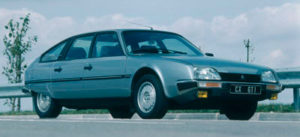
The 2400 GTi was added in 1977. Using Bosch L-Jetronic fuel injection, this gave the CX a boost of power to 128bhp, with the injected engine quickly becoming available on the Pallas, Prestige and Safari. At the other end of the range, in 1979 the 2000 (DS20) engine was replaced with a new 2.0 aluminium-block OHC engine shared with Peugeot and Renault through the Douvrin joint-venture. Between 1981 and 1982, the 2400 engine was increased in size to the same 2500cc as the diesel, the C-matic gearbox was replaced by a three-speed ZF automatic (only ever sold with the 2500 non-turbo petrol), and the front track was increased to allow metric TRX wheel rims to be fitted – resulting in a slight but visible change of shape to the front wheelarches.
Continuing with the performance theme, the CX GTi Turbo was introduced in 1984 with a Garrett T3 Turbocharger which propelled it to 137mph, and sometimes beyond too. Stylish advertising featured the inimitable Grace Jones, sporting a hairstyle in the shape of the CX.
In late 1985, the Series 2 CX was introduced with larger, plastic bumpers and a different interior layout. The series one revolving drum speedometer was not carried forward into the series 2, as it featured a conventional style clock and needle design similar to that seen in the S1 GTi Turbo.
Also in available in series two form was the Holy Grail CX Prestige Turbo. Rare even in LHD, there were only five RHD Prestige Turbos built, making them ‘the one to have’ for many. For LHD markets, the space of the Prestige was also combined with the diesel engine, albeit without the Prestige’s luxurious trim, as the CX Limousine – but never officially available in the UK.
Both petrol and diesel turbos received an intercooler and new ‘Turbo 2’ designation, although this did not increase the quoted power output.
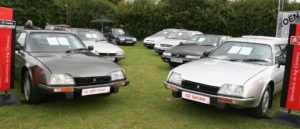
Each CX GTi Turbo is said to have it’s own personality and no two seem to drive alike. In the UK, a commercial tuner called Maikonics offered performance upgrades for the petrol Turbo, increasing power to 230bhp (T1) or 250bhp (T2). Although these conversions have been unavailable for a number of years now, a good Maikonics turbo remains a very entertaining car to drive.
The CX saloon was discontinued in 1989, and the estate in 1991 – to be replaced by the XM – although some unsold cars were registered several years later, usually by the late Roger Bradford at the CX Centre of St Ives, Cambridgeshire.
Thinking of buying a CX?
The main thing to consider with the CX is that they love to rust. They rust pretty much everywhere and the most common places are the bonnet, boot and doors.
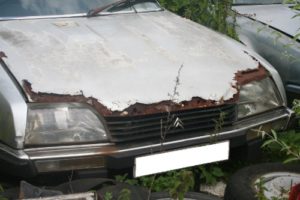
If it has the factory-fitted steel electric sunroof, it will most likely have rust between the sunroof frame and the roof skin – which will initially show as a series of small bubbles, probably around the front corners. Rust can be hidden when the car is sitting down ‘low’ – you cannot see the condition of the subframes and longerons. If these are rotten, generally you should look at another CX for sale. To change the longerons and subframes is a prohibitively large task although it can be done. Bubbles in the rear door/wing joint on both saloon and estates can be a first sign of significant hidden damage. Estate bodyshells are particularly prone to rot around the rear end – partially seized tailgate hinges lead to flexing of the roof skin, failure of the sealant, and rot starting from inside.
The suspension on the CX is the well known Hydropneumatic system and is relatively trouble free if maintained correctly. The hydraulic fluid should be LHM – Liquid Huile Minerale – which is green in colour. No other alternatives should be used. The spheres play the main part of the ride of the CX, and with ‘flat’ spheres, you will have a very hard and uncomfortable ride. The front spheres are very easy to change on the CX, but the rears are a little harder in accessibility terms. Spheres are readily and inexpensively available, either new or recharged. A simple way to check the condition of the spheres is by having the CX running in normal suspension height, and by using your knee, push down on the front or rear of the bumper (in the middle). If there is no give at all then new spheres are needed. When the engine is ticking over, you could check if the suspension accumulator sphere is in need of changing. You should hear the hydraulic pump operate once every 30 to 45 seconds. If the sound is continuous or every few seconds then a new suspension accumulator sphere is needed. These are readily available and easy to change. The vast majority of CXs have the Diravi power steering, and a second accumulator for the brakes. Down in the front corner of the engine bay, this is often ignored. If flat, the brakes will lack sufficient reserve of pressure should the engine stop at speed. Changing it will reveal weaknesses in the hydraulic pipes, as they are put under great strain whilst undoing the sphere from it’s mount.
High mileage CXs are perfectly acceptable as long as they have been maintained correctly and have an up-to-date service record.
Engine wise, the whole range is pretty much bomb proof and the engines normally outlive the body. There are a couple of points though – on all manual transmission CXs, but especially turbos, it is an engine out job to change the clutch (it can be done in situ but is very fiddly, and probably a quicker and easier job to remove engine and gearbox). 2.5 injection petrol engines can suffer from the flywheel ignition sensor failing through heat – the usual first symptoms are a failure for the engine to restart when hot, with the rev counter staying on zero as the engine is cranked over. Oil pressure switches should be replaced if they start to leak – complete failure can lead to a loss of lubrication. The Douvrin 2.0 and 2.2 engines have cambelts, unlike the other engines.
The DTR Turbo 2 gained a poor reputation when new because of a common tendency for the engine block casting to become porous, resulting in rapid coolant consumption. The engines were cast from poorly recycled scrap in India, resulted in impurities being corroded out by poor-quality coolant. The fix was a rebuilt engine with stainless liners, marked by an engine number plate bearing the words Échange Standard. This shouldn’t be too much of a problem nowadays though, as the engines should have been changed earlier in their lives – unless you buy a DTR Turbo 2 that has been stood for a long period of time.
Many CXs, including all petrol turbos originally had 390mm diameter Michelin TRX tyres, which are still available but cost around £200 each. Fortunately, there are now alternative rims available using more common size tyres. Some Alfa Romeo alloys bolt straight on, sharing the unusual 5×98 PCD. If you want to open up even more options then you can fit 100×5 PCD wheels with ‘Wobbly Bolts’.
CXs that are equipped with ABS do sometimes have trouble with the set-up. It is not uncommon to see a CX with the ABS light illuminated, but this will cause the MOT to be failed. The most common ABS faults will be due to wheel sensors, especially on the front, but other failures can include the ECU and relays (under the back seat).
Another area to check on the CX are the rear arm bearings. This is a fairly large task to renew them and it will also wear out your tyres too! If you can hear creaks from the back of the car, and when looking at the wheels from the back and they are at an angle, then the rear arm bearings have most probably gone – the rear wheels should be perfectly vertical.
If possible, buy a good quality CX as the prices are still relatively low compared with the DS so they will prove a worthwhile investment. Good, early Series 1 CXs are becoming scarcer and along with high model (GTi Turbo / Prestige) Series 2 cars they will prove to be the most desirable in years to come.
What to look for…
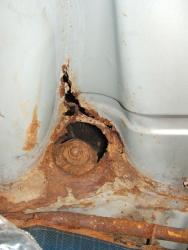
Rear suspension mount rot
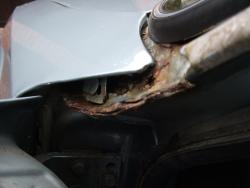
Lower windscreen surround and A-post
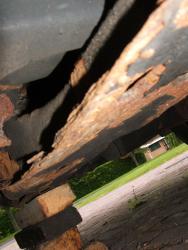
Rust in longeron structure, joining front and rear subframes
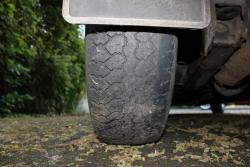
Rear suspension arm bearings fail, leading to rapid and uneven tyre wear


